

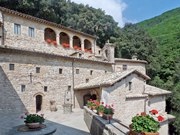
"Carceri" are literally "prisons", but in this context the word refers to a series of caves on Monte Subasio that were used by hermits. Brother Sylvester, one of the early followers of St Francis lived in one of them in ca. 1210. The monks of San Benedetto owned the land until ca. 1215, when they gave it to St Francis.
The hermitage was among the four specified by Pope Clement VI in 1350, at the behest of Brother Gentile of Spoleto, “to observe inviolate ... the Rule [of St Francis] in that purity and primal simplicity in which he wrote it”. However, Pope Innocent VI revoked this concession in 1355, when Gentile da Spoleto was accused of heresy and imprisoned.
The spirit of austerity survived at the Carcere and its friars became associated with the reformed community that the Blessed Paoluccio de' Trinci established at San Bartolomeo di Brogliano in 1368. Pope Gregory XI approved the way of life of eleven hermitages, including those at Brogliano and le Carcere, in 1373. Much of its surviving fabric probably dates to this period. The friars of this movement became known as "the brethren of the family of the observance" or the "Zoccolanti" (because they wore wooden clogs).
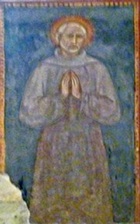
St Bernardino of Siena restored the convent in 1426.
Convent
The following structures are all in the “Santuario” near the entrance.
Cappella di San Bernardino (15th century)
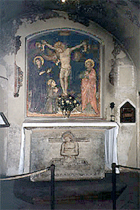
[There is a small stained glass window (14th century) on the counter-facade.]
Crucifixion (15th century)
This fresco above depicts the Crucifixion and the Virgin with St John the Evangelist and the kneeling St Francis at the foot of the Cross.
Cappellina di Santa Maria delle Carceri (1215)
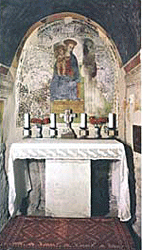
Madonna and Child with St Francis (15th century)
The fresco behind the altar, which was painted over another fresco (13th century) of the Crucifixion, is attributed to Tiberio d' Assisi.
Grotta San Francesco
Although there is no evidence that St Francis ever stayed at the hermitage, tradition has it that he used the so-called Grotta San Francesco as a retreat. This grotto is reached by the steep staircase on the right in San Bernardino. The presumed grotto is divided into two rooms:
-
✴One of them contains the niche in which St Francis is said to have slept.
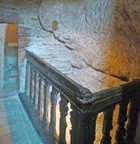
-
✴The other is now a chapel.
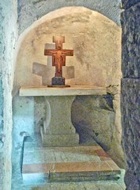
St Francis Preaching to the Birds (15th century)
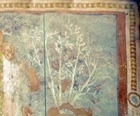
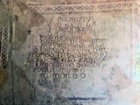
Cappella di Santa Maria Maddalena (15th century)
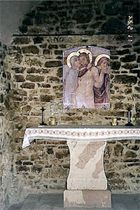
Pietà (15th century)
The altarpiece in the chapel depicts the Pietà with the Virgin and St John the Evangelist.
Hermitage
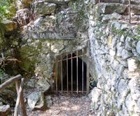
Return to Monuments of Assisi.
Return to Walk I or the page Around Assisi.
Return to the home page on Assisi.

